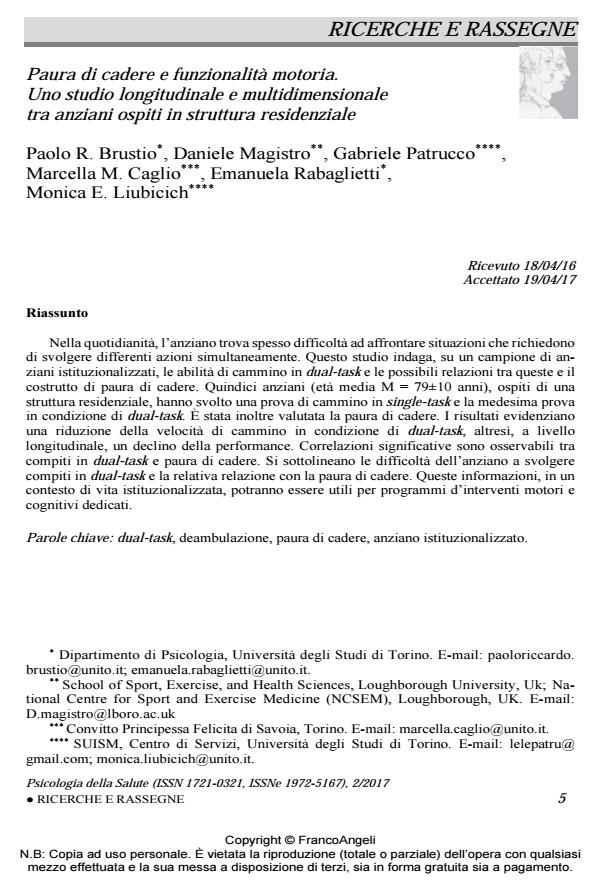Fear of falling and motor functionality. A longitudinal and multidimensional study among older adults in a long-term residential care setting
Journal title PSICOLOGIA DELLA SALUTE
Author/s Paolo R. Brustio, Daniele Magistro, Gabriele Patrucco, Marcella M. Caglio, Emanuela Rabaglietti, Monica E. Liubicich
Publishing Year 2017 Issue 2017/2
Language Italian Pages 16 P. 5-20 File size 235 KB
DOI 10.3280/PDS2017-002001
DOI is like a bar code for intellectual property: to have more infomation
click here
Below, you can see the article first page
If you want to buy this article in PDF format, you can do it, following the instructions to buy download credits

FrancoAngeli is member of Publishers International Linking Association, Inc (PILA), a not-for-profit association which run the CrossRef service enabling links to and from online scholarly content.
In everyday life, older adults may often find difficulties to deal situations requiring the performance of different actions simultaneously. This study investigates the walking per-formance during dual-task conditions and the possible relationship with fear of falling in a group of older adults living in a long-term care setting. Fifteen older adults (average age M = 79±10 years) carried out a walking test in single-task and the same test in different dual-task conditions. Data on the fear of falling were collected. Results showed a reduction of walking speed under dual-task condition. Moreover a performance decline over the time was observed. Significant correlations were observed between dual-task conditions and fear of falling. The results underline the difficulties during dual-task condition in old age and the relationship with the fear of falling. This information may be useful for the development of specific physical and cognitive interventions.
Keywords: Dual-task, walking, fear of falling, long-term care setting.
Paolo R. Brustio, Daniele Magistro, Gabriele Patrucco, Marcella M. Caglio, Emanuela Rabaglietti, Monica E. Liubicich, Paura di cadere e funzionalità motoria. Uno studio longitudinale e multidimensionale tra anziani ospiti in struttura residenziale in "PSICOLOGIA DELLA SALUTE" 2/2017, pp 5-20, DOI: 10.3280/PDS2017-002001